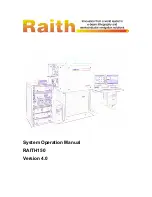
18
World Precision Instruments
Calibrating Rate using a Known Volume
We can calculate the volume of liquid contained in a 1 mm length of a glass pipette, if
no t nn r a
t r ( )
n an n t t at no n o u
an
asur
the time it takes to inject it. From this we can calculate the rate of injection. For
a
t o u
n
o ass t
( P
1B100
) s
n an
t ta s s on s to n t t at o u
t n t o or s on s
n / s or
n /s on an a n o u
t n ta s
s on s to n t
s
t o s s uss n t o o n o
o tt //
o
o /
o/
/
ntra nous
ro n t ons
ra s ar a to stu
a ut
n
In the Jove video, the capillary tip is 10–20 µm. By following these steps, we are able to
calculate the timing needed to deliver a 1 nl injection by counting the time between 1
ar s as t u s n t
NOTE
: The
PV850
timing should not be adjusted to go below 10–15 ms as an absolute
minimum, since it takes 6–10 ms for the pressure valves to respond.
1. Fill a small dish with mineral oil and place it under a stereo microscope.
2. Turn on your air and vacuum pumps, and set your compensation pressure and
your injection pressure. The proper settings must be determined experimentally.
Turn on the
PV850
.
NOTE
: The injection pressure must exceed the compensation pressure in order
to
t t u
s a
tt r to n t a s
r o u nto t n ra o
s n a n o nt r an nt ar r ar t n t n
ro
tt at
increments.
5. Mount your “graduated” micropipette on the
PV850
that is connected to the
Injection Port on the
PV850
.
6. Set the mode to Manual. Hold down the
oot s t to n t u ro t
ro
tt nto t o
s
7. Record the amount of time it takes in seconds for the meniscus in the
micropipette to travel from one 1 mm mark to the next. It should take between
20 and 30 seconds for each injection. You may need to adjust the injection
pressure to achieve this time frame.
8. Repeat steps 6–7 three times
ra t t r tr a s to n t a ra t
t ta s to n t a
o u n
o u
10. Calculate the volume of a 1 mm segment of your micropipette using the volume
formula for a cylinder:
r ra us o t
tt /
h= length of the pipette = 1000 µm











































